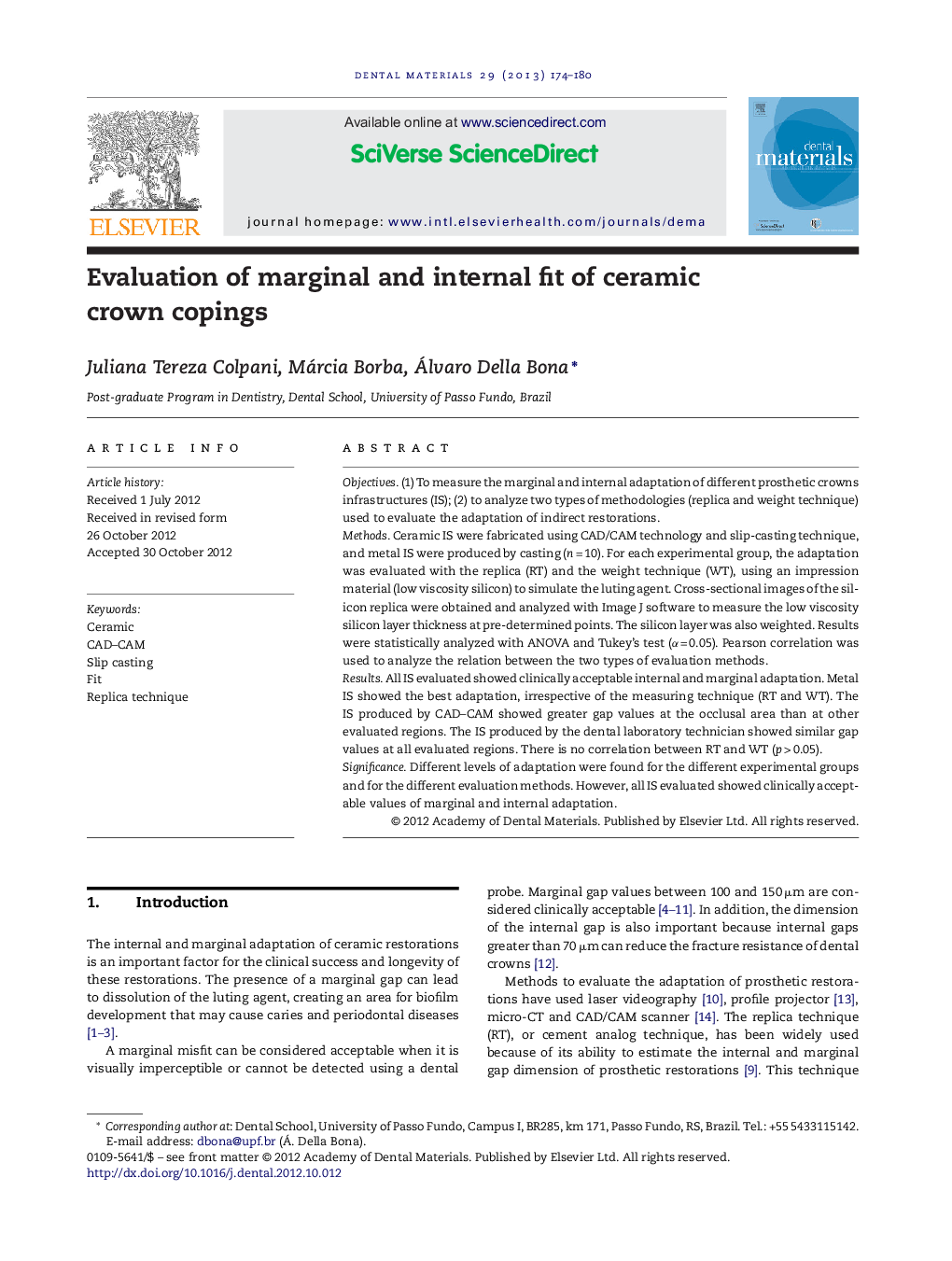| Article ID | Journal | Published Year | Pages | File Type |
|---|---|---|---|---|
| 1421491 | Dental Materials | 2013 | 7 Pages |
Objectives(1) To measure the marginal and internal adaptation of different prosthetic crowns infrastructures (IS); (2) to analyze two types of methodologies (replica and weight technique) used to evaluate the adaptation of indirect restorations.MethodsCeramic IS were fabricated using CAD/CAM technology and slip-casting technique, and metal IS were produced by casting (n = 10). For each experimental group, the adaptation was evaluated with the replica (RT) and the weight technique (WT), using an impression material (low viscosity silicon) to simulate the luting agent. Cross-sectional images of the silicon replica were obtained and analyzed with Image J software to measure the low viscosity silicon layer thickness at pre-determined points. The silicon layer was also weighted. Results were statistically analyzed with ANOVA and Tukey's test (α = 0.05). Pearson correlation was used to analyze the relation between the two types of evaluation methods.ResultsAll IS evaluated showed clinically acceptable internal and marginal adaptation. Metal IS showed the best adaptation, irrespective of the measuring technique (RT and WT). The IS produced by CAD–CAM showed greater gap values at the occlusal area than at other evaluated regions. The IS produced by the dental laboratory technician showed similar gap values at all evaluated regions. There is no correlation between RT and WT (p > 0.05).SignificanceDifferent levels of adaptation were found for the different experimental groups and for the different evaluation methods. However, all IS evaluated showed clinically acceptable values of marginal and internal adaptation.
